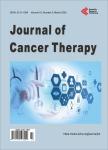Risk Factors Associated with In-Hospital Post-Chemotherapy Mortality in Patients with Malignant Musculoskeletal Tumors
Risk Factors Associated with In-Hospital Post-Chemotherapy Mortality in Patients with Malignant Musculoskeletal Tumors作者机构:Department of Orthopaedic Surgery Saitama Medical Center Jichi Medical University Saitama Japan Department of Orthopaedic Surgery Faculty of Medicine The University of Tokyo Tokyo Japan Department of Clinical Data Management and Research Clinical Research Center National Hospital Organization Headquarters Tokyo Japan Department of Health Policy and Informatics Tokyo Medical and Dental University Graduate School of Medicine Tokyo Japan Department of Clinical Epidemiology and Health Economics School of Public Health The University of Tokyo Tokyo Japan
出 版 物:《Journal of Cancer Therapy》 (癌症治疗(英文))
年 卷 期:2016年第7卷第6期
页 面:363-369页
学科分类:1002[医学-临床医学] 100214[医学-肿瘤学] 10[医学]
主 题:Chemotherapy Sarcoma In-Hospital Mortality Chemotherapy-Related Death Japanese Diagnosis Procedure Combination Database
摘 要:Introduction: Reducing the in-hospital post-chemotherapy mortality rate in patients with malignant musculoskeletal tumors is important for improving treatment outcome. This study aimed to investigate the risk factors associated with in-hospital post-chemotherapy mortality in patients with primary malignant musculoskeletal tumors. Methods: Using a Japanese national inpatient database, we retrospectively identified 5039 patients (2920 men and 2131 women;mean age, 39 years) who underwent curative chemotherapy for malignant musculoskeletal tumors between 2007 and 2010. We extracted data on the patients’ characteristics, complications, chemotherapeutic agent use, comorbidities, and in-hospital death. Logistic regression analyses were performed to analyze factors affecting in-hospital post-chemotherapy death in these patients. Results: The overall in-hospital mortality rate was 1.1%. Higher in-hospital mortality rates were significantly associated with a greater volume of blood transfusion (2500 mL) (odds ratio [OR], 49.71;95% confidence interval [CI], 22.24 - 111.12;p 0.001), diabetes mellitus (OR, 3.05;95% CI: 1.21 - 7.70;p = 0.019), and older age (OR, 3.05;95% CI, 1.11 - 8.37;p = 0.031). Conclusions: Higher in-hospital post-chemotherapy mortality rates were associated with massive blood transfusion, which was associated with a 16-fold higher risk of in-hospital mortality compared with other risk factors. Blood transfusion volume should be considered an important indicator for deciding whether the next cycle of chemotherapy is administered continuously or not.



